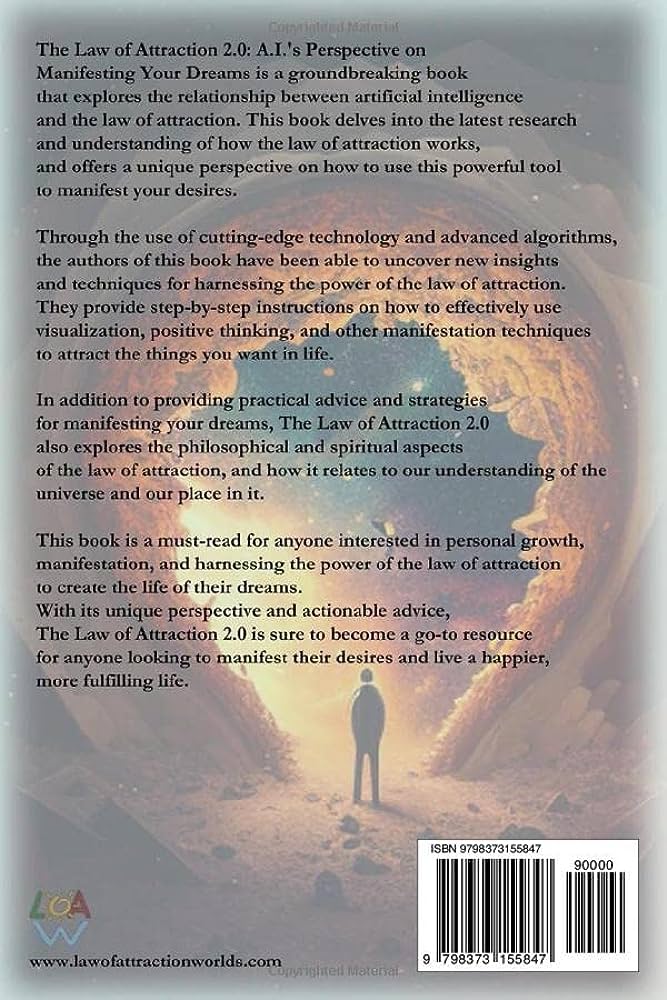Dreams have always been a fascinating and mysterious aspect of human experience. We spend about a third of our lives asleep, and during that time, we enter the realm of dreams—a world filled with symbolism, emotions, and hidden meanings. The exploration of dream interpretation offers us a unique opportunity to gain insights into our subconscious mind and unravel the enigma within. In this article, we will delve into practical techniques for deciphering the wisdom hidden in our dreams and understanding their significance in our waking lives.
Understanding Dreams
What Are Dreams?
Dreams are a series of thoughts, images, and sensations that occur during sleep. They can range from vivid and fantastical experiences to mundane scenarios. While the exact purpose of dreaming remains a subject of debate, theories suggest that it could aid in memory consolidation, emotional processing, and problem-solving.
The Science Behind Dreams
During sleep, our brain goes through various stages, including REM (Rapid Eye Movement) sleep, which is when most dreams occur. The brain’s activity during REM sleep resembles that of being awake, indicating a significant role in processing information and emotions.
Types of Dreams
- Lucid Dreams: In lucid dreams, the dreamer becomes aware that they are dreaming and can sometimes control the dream’s narrative.
- Nightmares: Nightmares are distressing dreams that evoke fear, anxiety, or sadness in the dreamer.
- Recurring Dreams: These are dreams that repeat themselves, often carrying a specific message or unresolved issue.
- Prophetic Dreams: Some individuals believe that dreams can provide glimpses of future events or offer intuitive insights.
The Psychology of Dreams
Freudian Dream Analysis
Sigmund Freud, the father of psychoanalysis, proposed that dreams serve as a gateway to the unconscious mind. He suggested that dreams are symbolic representations of repressed desires and unresolved conflicts. Analyzing dream symbols can help uncover these hidden meanings.
Jungian Dream Analysis
Carl Jung, another influential psychologist, introduced the concept of the collective unconscious and archetypes. Archetypes are universal symbols and themes that appear in dreams, reflecting our shared human experiences and emotions.
Cognitive Dream Theories
In contrast to Freud and Jung’s emphasis on symbolism, cognitive theories propose that dreams are a natural part of information processing. Dreams might help us consolidate memories and solve problems by reorganizing information and thoughts during sleep.
Keeping a Dream Journal
The Importance of Dream Journaling
Keeping a dream journal is a fundamental practice for those interested in dream interpretation. It helps in recalling dreams more vividly, identifying patterns, and understanding recurring themes.
How to Start a Dream Journal
- Choose the Right Journal: Select a notebook or journal solely dedicated to recording your dreams.
- Setting Up a Dream Journaling Routine: Place the journal and a pen by your bedside to encourage daily dream recording.
Techniques for Recording Dreams
Dream journaling techniques can vary depending on personal preferences, such as:
- Descriptive Writing: Write down the details of your dream as soon as you wake up, capturing emotions, people, places, and events.
- Sketching Dreams: For visual learners, sketching or drawing dream scenes can enhance the dream recall process.
- Voice Recording: Consider using voice recording apps to capture your dream experiences if writing isn’t your preferred method.
Analyzing Dream Symbols
Identifying Dream Symbols
Dreams are filled with symbols that often hold personal significance. Learning to recognize these symbols is crucial for understanding their meanings.
Common Dream Symbols and Their Meanings
- Water and Oceans: Represent emotions, the ebb, and flow of life.
- Flying and Falling: Symbolize a sense of freedom or loss of control.
- Animals and Creatures: Can represent instincts, feelings, or even specific traits.
- Teeth and Losing Teeth: Often linked to communication and confidence.
Personalized Dream Symbols
- Creating a Personal Dream Symbol Dictionary: Make a list of symbols that frequently appear in your dreams and associate them with personal meanings.
- Cultural and Individual Symbolism: Recognize that dream symbols can vary based on cultural background and personal experiences.
Unraveling Dream Themes
Recognizing Dream Themes
Dreams often revolve around specific themes related to our waking life experiences, emotions, and concerns.
Common Dream Themes and Their Interpretations
- Love and Relationships: Reflect feelings of intimacy, trust, or fears of rejection.
- Work and Career: Could signify ambition, stress, or desire for success.
- Fear and Anxiety: Highlight unresolved fears or worries in waking life.
- Adventure and Exploration: Represent a desire for new experiences and growth.
Analyzing Dream Themes in Context
Dreams should be interpreted with consideration of the dreamer’s emotional state, recent life events, and personal context. A dream about falling, for example, might indicate a fear of failure or loss of control during a challenging period in the dreamer’s life.
Harnessing Lucid Dreaming
Understanding Lucid Dreams
Lucid dreams occur when the dreamer becomes aware that they are dreaming while still in the dream state. This awareness allows the dreamer to exercise some control over the dream narrative.
The Power of Lucid Dreaming
- Overcoming Nightmares: Lucid dreaming can empower individuals to confront and change the outcome of distressing dreams.
- Creative Problem Solving: Engaging in problem-solving scenarios within lucid dreams can lead to creative insights in waking life.
Practices for Enhancing Lucid Dreaming
- Reality Checks: Regularly perform reality checks during waking hours to increase awareness and trigger lucidity in dreams.
- Meditation and Visualization: Incorporate mindfulness and visualization techniques to improve dream recall and clarity.
Dream Interpretation Techniques
Free Association
Free association involves exploring the dream’s symbols and events and allowing thoughts and emotions to flow freely without censorship. This can uncover deeper meanings and connections to the dreamer’s waking life.
Amplification
Amplification entails examining dream symbols from various perspectives, cultural contexts, and personal experiences to gain a more comprehensive interpretation.
Active Imagination
Active imagination is a technique where the dreamer actively engages with dream images and characters through visualization and dialogue to gain insights and resolve inner conflicts.
Gestalt Techniques
In Gestalt dream analysis, the dreamer re-experiences the dream from the perspective of each dream element, helping to understand the dream’s gestalt or overall pattern.
Embracing the Shadow Self
Understanding the Shadow Self
The shadow self refers to the unconscious aspect of our personality containing repressed desires, fears, and traits we prefer not to acknowledge. Dreams can provide glimpses into the shadow self, offering opportunities for personal growth and self-awareness.
Identifying Shadow Aspects in Dreams
Pay attention to darker or unfamiliar elements in dreams, as they often represent aspects of the shadow self. Embracing and integrating these aspects can lead to a sense of wholeness and self-acceptance.
Dreams as a Tool for Self-Discovery
Discovering Inner Desires and Passions
Dreams can uncover hidden aspirations and passions that may not receive attention in waking life. By understanding these desires, individuals can pursue paths aligned with their true selves.
Uncovering Subconscious Fears and Anxieties
Dreams often bring subconscious fears and anxieties to the surface. By acknowledging and addressing these emotions, individuals can work towards personal growth and healing.

Gaining Clarity on Life Goals and Direction
Dreams can provide clarity on important life decisions and highlight areas that need attention. By integrating dream insights, individuals can find greater direction and purpose.
Common Dream Themes FAQ
Q: What do recurring dreams signify?
A: Recurring dreams often signal unresolved issues or emotions that need attention. They may persist until the dreamer addresses the underlying concerns.
Q: Why do I often dream about falling from heights?
A: Falling dreams can symbolize feelings of insecurity or a lack of control in certain aspects of life.
Q: What are common interpretations of being chased in dreams?
A: Being chased in dreams often reflects avoidance of an issue or a fear of confronting a challenging situation.
Q: Why do dreams sometimes feel so real?
A: During REM sleep, the brain is highly active, which can make dreams feel lifelike and vivid.
Q: How do cultural backgrounds influence dream symbolism?
A: Cultural experiences and beliefs can shape the interpretation of dream symbols, leading to diverse meanings across different societies.
Lucid Dreaming FAQ
Q: Can anyone learn to have lucid dreams?
A: Yes, with practice and dedication, most individuals can develop the ability to experience lucid dreams.
Q: What are reality checks, and how do they work for inducing lucid dreams?
A: Reality checks involve questioning whether you are dreaming throughout the day. Performing these checks in dreams can trigger lucidity.
Q: Are there any potential risks associated with lucid dreaming?
A: Lucid dreaming is generally safe, but some individuals may experience sleep disruptions or difficulty distinguishing between dream and reality.
Q: Can lucid dreaming be used to overcome phobias and fears?
A: Yes, lucid dreaming can be a helpful tool for confronting and resolving phobias and fears in a safe dream environment.
Q: How can lucid dreaming enhance creativity and problem-solving abilities?
A: Engaging in creative activities and problem-solving scenarios in lucid dreams can stimulate the mind and lead to innovative solutions in waking life.
Conclusion
In the world of dreams lies a vast reservoir of wisdom and self-discovery waiting to be explored. By understanding the science, symbolism, and techniques of dream interpretation, we can unlock the hidden messages from our subconscious mind. Embracing the journey of self-discovery through dream interpretation can lead to personal growth, improved self-awareness, and a deeper connection with our inner selves. So, let us embrace the enigma within and embark on the enlightening voyage of dream exploration.

Greetings and welcome to my corner of the digital realm! I’m Ethan Harrington, a dedicated and passionate professional in the field of therapy psychology. My journey through the intricate landscapes of the human mind, emotions, and dreams has led me to this point, where I’m excited to share my insights, knowledge, and experiences with you. See this

